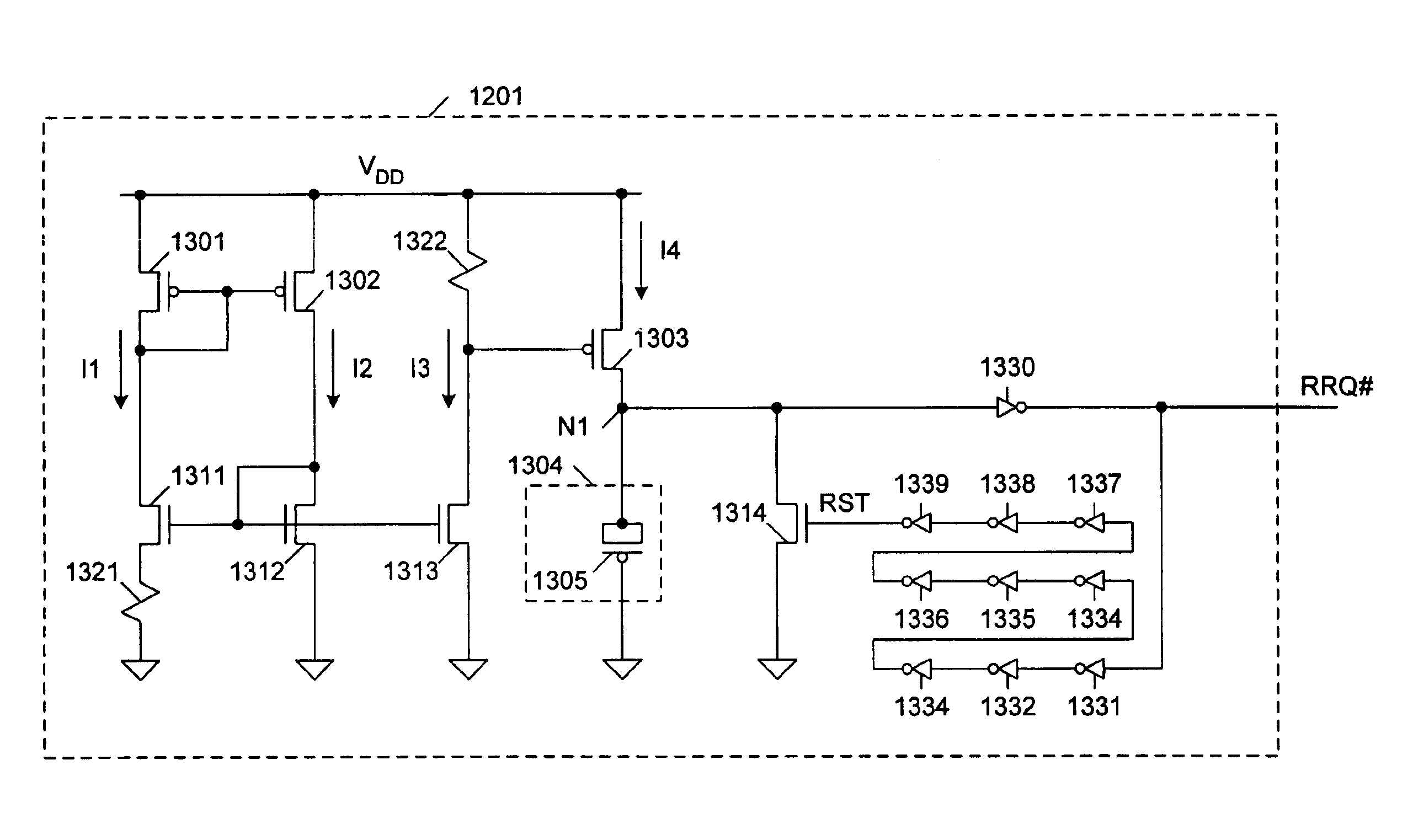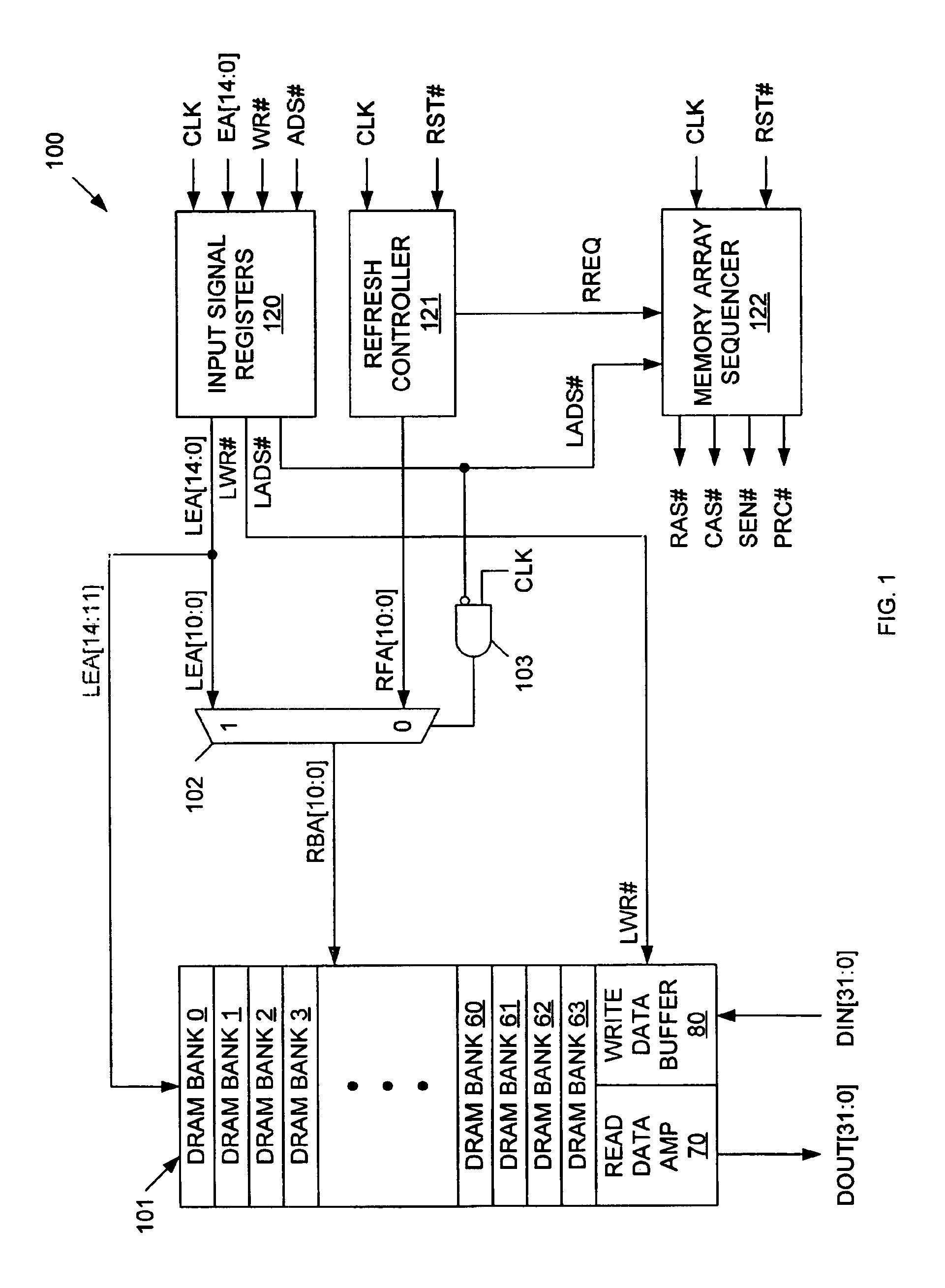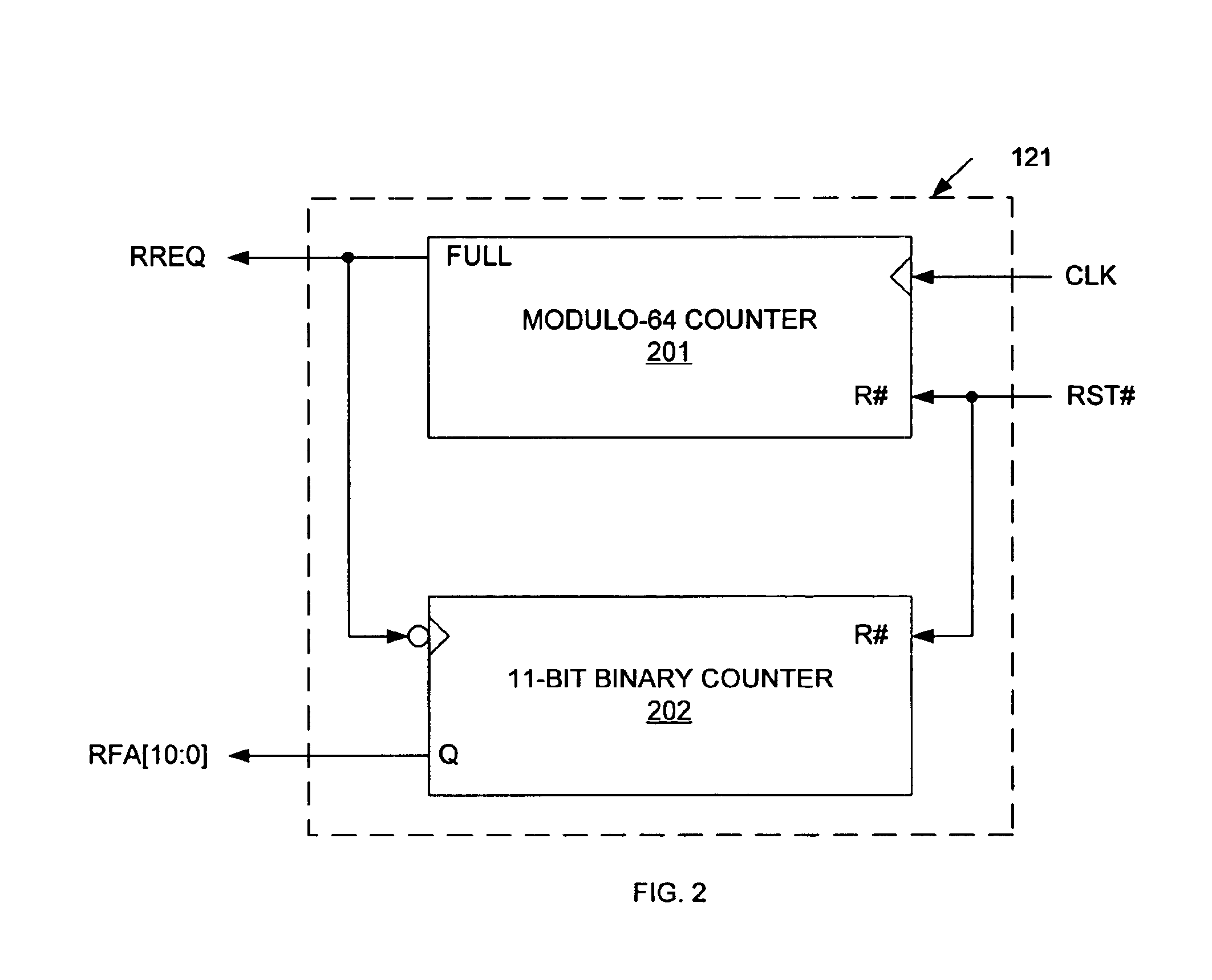Method and apparatus for temperature adaptive refresh in 1T-SRAM compatible memory using the subthreshold characteristics of MOSFET transistors
a technology of mosfet transistor and temperature adaptive refresh, which is applied in the field of dynamic random access memory, can solve the problems of delayed external access to this dram device, consuming memory bandwidth for the refresh operation of a dram cell, and previous attempts to use dram cells in sram applications have been limited success
- Summary
- Abstract
- Description
- Claims
- Application Information
AI Technical Summary
Benefits of technology
Problems solved by technology
Method used
Image
Examples
second alternate embodiment
[0108]In the embodiments described above, a memory clock cycle is split into two portions, such that both a memory access operation and a refresh operation can be performed during a single memory clock cycle. As a result, the minimum memory clock period is limited to a memory access operation period plus a refresh operation period. Even when the refresh cycle is shorter than the memory access cycle, the amount of memory bandwidth allocated for refresh is substantial. In practical applications, refresh operations are relatively infrequent events, occurring once in multiple clock cycles. Allocating a fixed portion of each clock period in order to hide refresh operations wastes bandwidth. In accordance with another embodiment of the present invention, another way to decrease the impact of refresh operations on the operating frequency of the memory system is to allocate one refresh period among multiple clock cycles.
[0109]FIG. 7 is a block diagram of a 1-T SRAM system 700, which is used...
third alternate embodiment
[0151]FIG. 12 is a block diagram of a temperature-adaptive refresh controller 1221 in accordance with another embodiment of the present invention. Temperature-adaptive refresh controller 1221 is designed to operate with the memory devices described above in connection with FIGS. 1-11. Thus, temperature-adaptive refresh controller 1221 is used in place of the above-described refresh controller 121 (FIGS. 1-2 and 7). The temperature-adaptive refresh controller 1221 consists of a temperature-adaptive oscillator 1201, a sequential logic element 1203 formed by cross-coupled NAND gates 1206-1207, and an 11-bit binary counter 1202. In the described embodiment, sequential logic element 1203 is a set-reset flip-flop.
[0152]Temperature-adaptive refresh controller 1221 generates the periodic refresh request signal RREQ, which is used to control the refresh operations of memory system 100. More specifically, temperature-adaptive oscillator 1201 periodically generates a negative pulse RRQ# in the...
PUM
 Login to View More
Login to View More Abstract
Description
Claims
Application Information
 Login to View More
Login to View More - R&D
- Intellectual Property
- Life Sciences
- Materials
- Tech Scout
- Unparalleled Data Quality
- Higher Quality Content
- 60% Fewer Hallucinations
Browse by: Latest US Patents, China's latest patents, Technical Efficacy Thesaurus, Application Domain, Technology Topic, Popular Technical Reports.
© 2025 PatSnap. All rights reserved.Legal|Privacy policy|Modern Slavery Act Transparency Statement|Sitemap|About US| Contact US: help@patsnap.com



